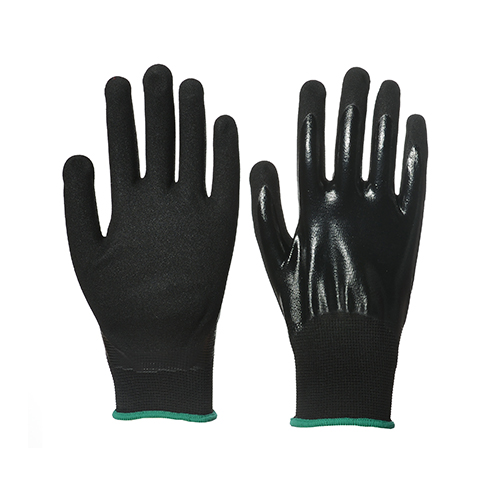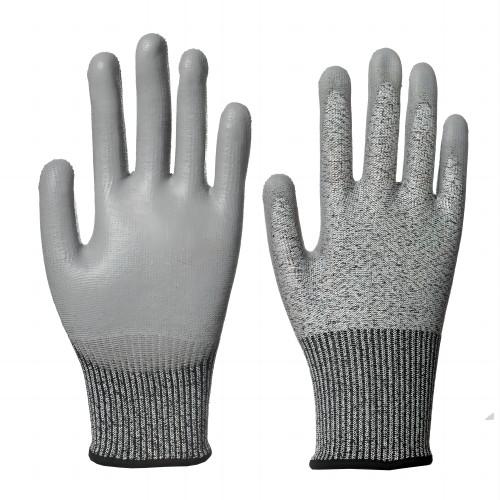 Generally speaking, when choosing work gloves, nitrile-coated gloves and latex-coated gloves are usually popular choices. But which one is better? Before discussing the pros and cons of gloves, let’s first discuss the characteristics of latex and nitrile themselves.
Generally speaking, when choosing work gloves, nitrile-coated gloves and latex-coated gloves are usually popular choices. But which one is better? Before discussing the pros and cons of gloves, let’s first discuss the characteristics of latex and nitrile themselves.
Nitrile vs Latex
Fundamentally, nitrile is a synthetic rubber made from nitrile rubber (also known as NBR), while latex is made from genuine natural rubber. When using these glove materials, it’s essential to note: Do you have a latex allergy? If you are allergic to latex, then you must opt for an alternative to latex, which is nitrile gloves.
Advantages of Nitrile Gloves
Latex-free (suitable for those allergic to latex) Strong puncture resistance, high sensitivity, resistance to infectious substances, strong chemical resistance, and long shelf life. For medical-grade gloves, if puncture resistance and chemical resistance need to be considered, it’s best to use nitrile gloves.
Advantages of Latex Gloves
Fits the hand like a second skin, is highly sensitive, is abrasion-resistant, elastic, biodegradable, effective against infectious substances, low cost, high cost-effectiveness, and has natural chemical resistance to substances such as acids, alkalis, chlorine, iodine, and formaldehyde.
Latex gloves are most popular in the medical industry, often referring to medical-grade gloves, which can typically prevent the transmission of bloodborne pathogens and act as a perfect barrier against other contaminants such as bacteria, oil stains, and microorganisms. Of course, latex gloves are not only used in the medical industry but are also suitable for the food industry, ensuring food safety and health.
Returning to the original question, before evaluating which gloves are best, you need to know that there are four types of glove coatings: PVC coating, polyurethane coating, latex coating, and nitrile palm coating. Each type has its advantages, and your final choice generally depends on your usage and work environment.
Four Types of Palm-Coated Work Gloves
Nitrile Coated Gloves
Nitrile-coated gloves have multiple functions due to the characteristics of the material itself, including puncture resistance, cut resistance, anti-blocking, abrasion resistance, oil resistance, flame resistance, and tear resistance. Unlike latex, nitrile has good oil resistance. It is not flame-resistant but generally performs well in a temperature range of -4°C (25°F) to 149°C (300°F).
Of course, the functionality of nitrile gloves goes beyond these. They can also turn into the foam with sponge characteristics, absorb grease from the surface of objects, and improve grip strength. Therefore, for oil-based work such as metal stamping, nitrile-coated gloves undoubtedly become the ideal choice.
Latex Coated Gloves
In contrast, latex-coated gloves have high elasticity and superior grip strength compared to any other material. They can withstand high temperatures and resist tearing. Latex is resistant to alcohol and some ketones, but not to hydrocarbons such as gasoline or organic solvents. The biggest drawback is that they can cause allergic reactions in humans.
PVC Coated Gloves
PVC-coated gloves are made of inexpensive synthetic materials that do not cause allergic reactions. Compared to latex and nitrile, they are sturdy and elastic. They do not have the sensitive touch of latex gloves, and this elasticity can generally be maintained at low temperatures, making them more suitable for use in winter. Because this coating provides good waterproof performance, it is very suitable for use in wet environments and liquid handling work.
Polyurethane Coated Gloves
Polyurethane-coated gloves have excellent stretchability and strength, with a low particle shedding rate. They have strong grip strength and are non-sticky, so they do not need powder like some rubber products to reduce stickiness, making them more stable when handling tools and materials. This material is soft, puncture-resistant, abrasion-resistant, and flexible. Secondly, polyurethane coatings have a certain oil resistance, preventing grease and liquid from penetrating into the gloves.
They are mainly used to provide cut resistance while maintaining sensitivity. They work well in the electronics and cleanroom industries. They are oil-resistant, solvent-resistant, fat-resistant, oil-resistant, gasoline-resistant (unlike rubber), oxidation-resistant, and ozone-resistant, but not resistant to hot water, and the operating temperature should not exceed 79°C (175°F). Compared to some other coating materials, polyurethane coatings are generally more environmentally friendly and have less impact on the environment. Overall, this type of glove has limited applications.
Which one should I choose?
As mentioned earlier, your choice of gloves depends on your usage and work environment. For safety reasons, it is best to afford gloves within your budget range. Buying cheap substitutes may lead to unexpected injuries, and cost-effectiveness is also something you need to consider. Quality and price complement each other. Therefore, regardless of the type of coated gloves you choose, it depends on your needs.
For example, if you want to withstand high temperatures and have excellent grip, then latex-coated gloves will be your choice. But if you want the best puncture resistance and chemical resistance, then choosing nitrile rubber is the best solution. For the glue processing industry, PVC coating is the most suitable choice, while polyurethane (PU) coating stands out for its low shedding, cut resistance, grip, and low allergen characteristics. There is no correct answer to what to choose, only according to what you need.
At AIBON, our work gloves have the above four types of coatings different specifications of personal protective equipment (PPE), and different price ranges. Our goal is to bring you first-class products and a good experience at an incredible price and with outstanding service, ensuring that you can reach the peak and perfection when purchasing.
How to Measure Glove Sizes – Source: AIBON
Medical Gloves – Source: FDA
Nitrile Gloves or Latex – Source: AIBON
Medical Gloves Guidance Manual – Source: FDA



